Damaged mummified bodies prevent Dublin crypt from opening
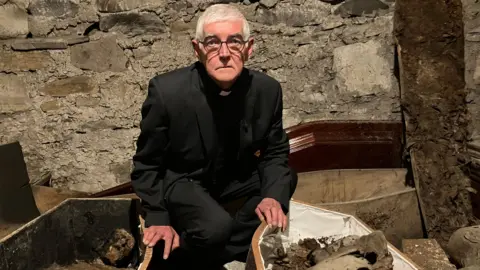 BBC
BBCAn Anglican church in Dublin has been unable to reopen a historic crypt to the public since the remains of mummified bodies were damaged in an arson attack.
One of the damaged bodies in St Michan's Church of Ireland is that of a man, known as the Crusader, who died about 800 years ago.
A 39-year-old man, Cristian Topiter, was jailed for six years after he pleaded guilty to the 2024 arson attack, which the church described as "an act of desecration and sacrilege".
St Michan's crypt usually attracts thousands of visitors and tourists every year but, nine months after the attack, it remains out of bounds.
The main entrance gates to the church's grounds and a steel gate leading to the crypt are locked.
'Irreparable'
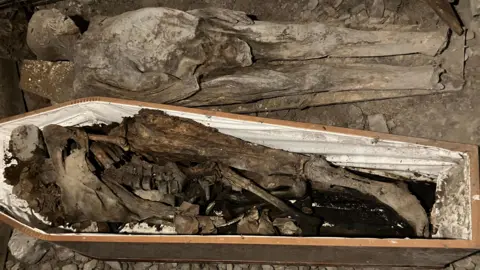
The church facilitated a visit to the site by BBC News NI, where the Venerable Archdeacon David Pierpoint outlined the responsibility he, and the wider church community, feel towards those interred in the crypt.
"As a parish, as the vicar of the parish and as parishioners, we're custodians of the whole church," he said.
"Not just above the church, but what's below the church, and it's a rather heavy burden to bear."
He said a huge amount of damage had been done to the estimated 800-year-old remains of the Crusader.
"All of his body has been charred - spine, his hands, one of his legs is completely missing," he said, adding that the harm caused to the Crusader as well as another man, believed to have been buried alive about 400 years ago, is "irreparable".
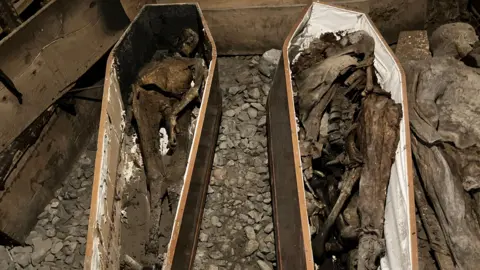
With tour groups prevented from visiting the crypt for most of the past year, the church has suffered a significant drop in parish income.
Archdeacon Pierpoint is hopeful groups can return soon once permission is granted by the diocesan authorities and Dublin City Council for the damaged remains to be removed to another crypt.
The vicar of St Michan's said it's important to reopen the crypts as soon as possible to ensure the church has sufficient funds to maintain the centuries-old church.
But, he said, it's also important to allow visitors from home and abroad "to see the phenomenon of what this actually is".
The remains of many of Dublin's most influential 17th, 18th and 19th Century families are entombed in St Michan's.
The limestone walls of the crypts and atmosphere within them are believed to have helped preserve the remains.
Decapitation and desecration
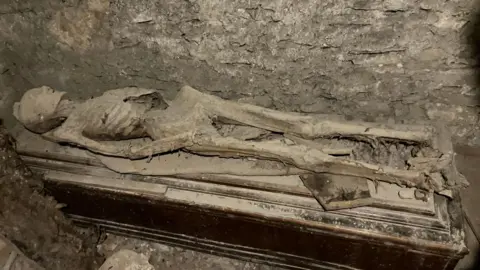
The arson attack is not the first time the church, and those interred there, have been targeted.
In 2019, vandals broke in and decapitated the Crusader.
The skull was later recovered and reattached with the help of the nearby National Museum of Ireland, according to Archdeacon Pierpoint.
That same year the crypt was damaged during another break in, with several mummified remains - including the 400-year-old remains of a nun - desecrated.
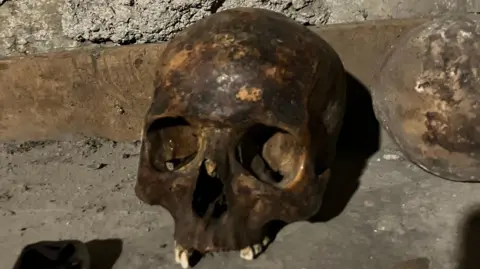
The crypts are also the resting place of Barristers Henry and John Sheares, two brothers who were leaders of the United Irishmen during the 1798 rebellion.
The site includes a copy of their execution order issued by the English authorities in Ireland at the time.
What is the history of St Michan's?
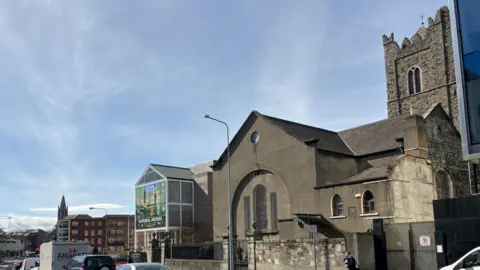
The first church on the site is believed to have been established in 1095, but the current church dates back to the 1680s with further renovations taking place between 1723 and 1725, in 1767 and in 1825.
It was restored in 1998.
All the mummified remains in the various crypts, apart from the Crusader are of people who died between 400 and 450 years ago, according to the church.
Despite the current restricted access to the grounds, St Michan's remains open for worship every Sunday.
